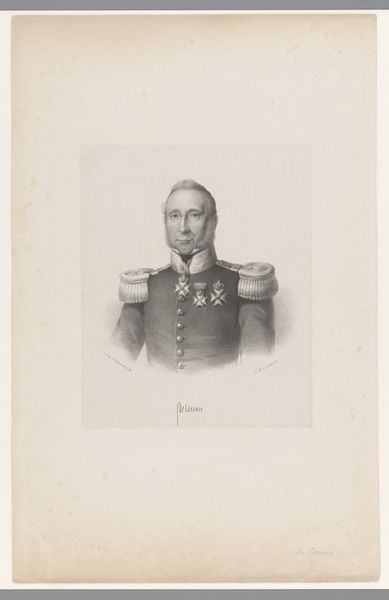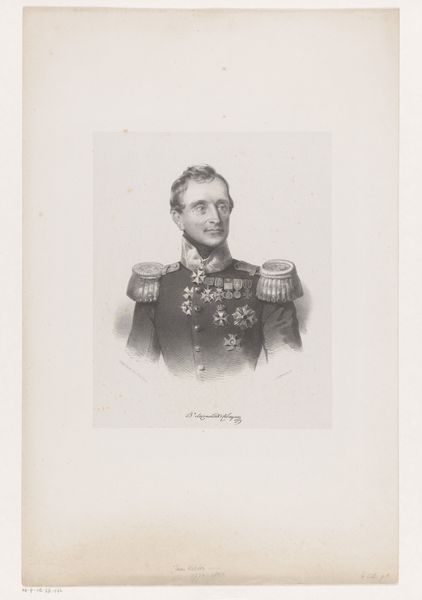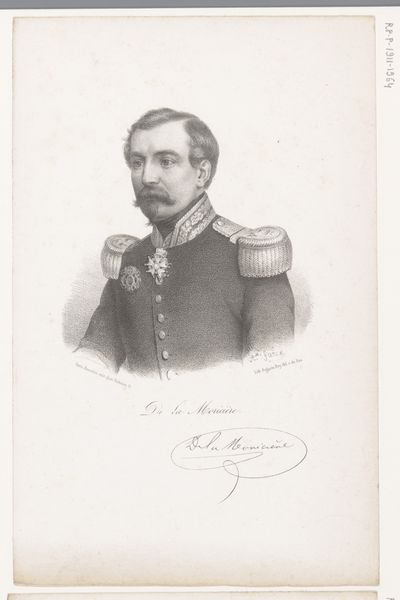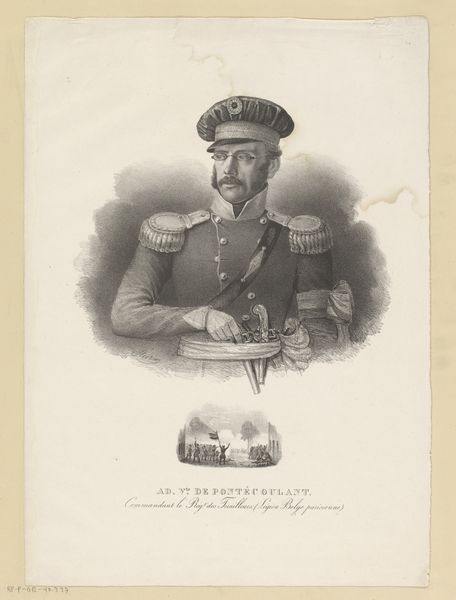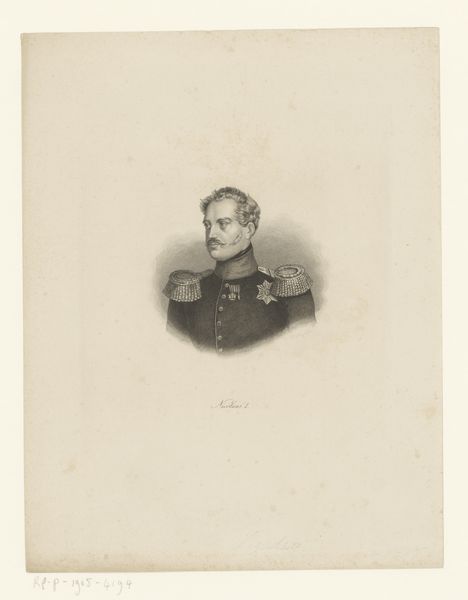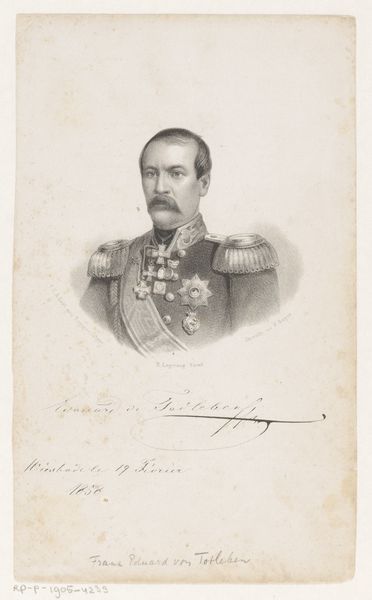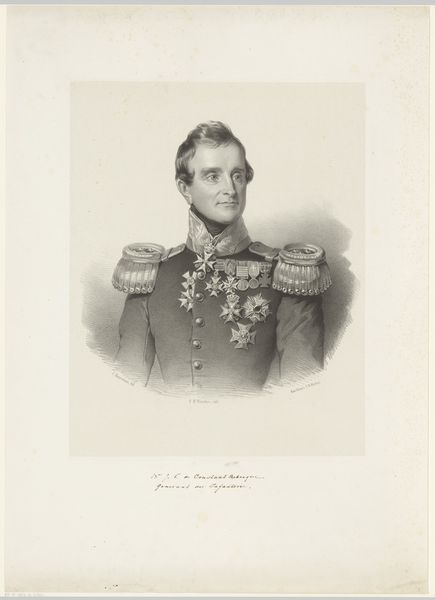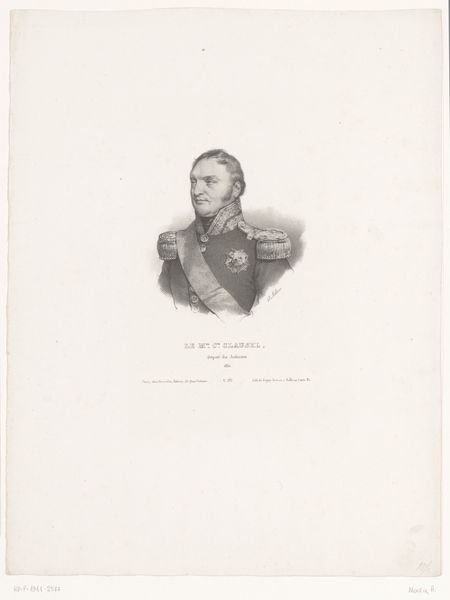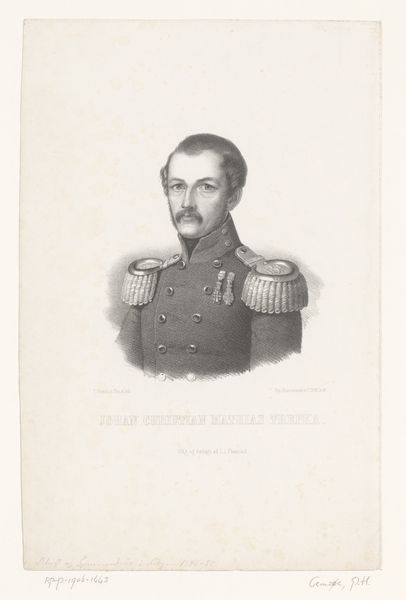
Portret van Carel Paul Amarant de Salis Soglio Mayenfeld c. 1851 - 1883
0:00
0:00
drawing, print, pencil
#
portrait
#
pencil drawn
#
drawing
#
light pencil work
# print
#
pencil sketch
#
pencil drawing
#
pencil
#
realism
Dimensions: height 510 mm, width 350 mm
Copyright: Rijks Museum: Open Domain
Curator: Before us hangs a drawing, likely dating from the period between 1851 and 1883. It is a portrait identified as "Portret van Carel Paul Amarant de Salis Soglio Mayenfeld", attributed to Johan Hendrik Hoffmeister. The medium appears to be primarily pencil, perhaps also involving a printmaking process. Editor: A stern fellow, wouldn’t you say? There's a clear formality, dictated not just by the subject's demeanor but also the precise, almost photographic, rendering of the details in his uniform. The tonal gradations are quite delicate. Curator: Indeed. Considering the subject's attire – that heavily ornamented military dress, complete with epaulettes and medals – we are evidently observing a man of some status. His portrait likely served to communicate and reinforce his position within the societal structures of the time. Editor: Absolutely. Note how the light pencil work allows a softness to the face despite the rigorous detailing of his uniform. This interplay softens the potential severity, don't you think? It adds a psychological depth that simple documentation often lacks. Curator: Interesting point. The medium itself– a drawing, particularly in pencil – lends an air of intimacy, as if we’re seeing him in a more private, perhaps preparatory context rather than the fully realized, grand public display. But the style remains aligned with realism, depicting the baron and what he represents in that context with accuracy. Editor: And this contrast – the personal medium juxtaposed with the formal subject – emphasizes the constraints of his role. His power comes from his uniform and medals, rendered in minute detail, yet he is still simply a man captured in fleeting, mutable pencil strokes. What becomes of that role in time? What happens to the pencil strokes? Curator: That contrast generates considerable tension, absolutely. Considering it, I think what interests me most is how Hoffmeister negotiates the intersection of personal portrayal and social position. The rendering itself reveals layers of historical nuance. Editor: Indeed, a study in controlled observation! Curator: Quite so. It gives us a window, not just to look *at* the Baron, but *through* him into the socio-political landscapes that shaped his identity and Hoffmeister's craft.
Comments
No comments
Be the first to comment and join the conversation on the ultimate creative platform.

